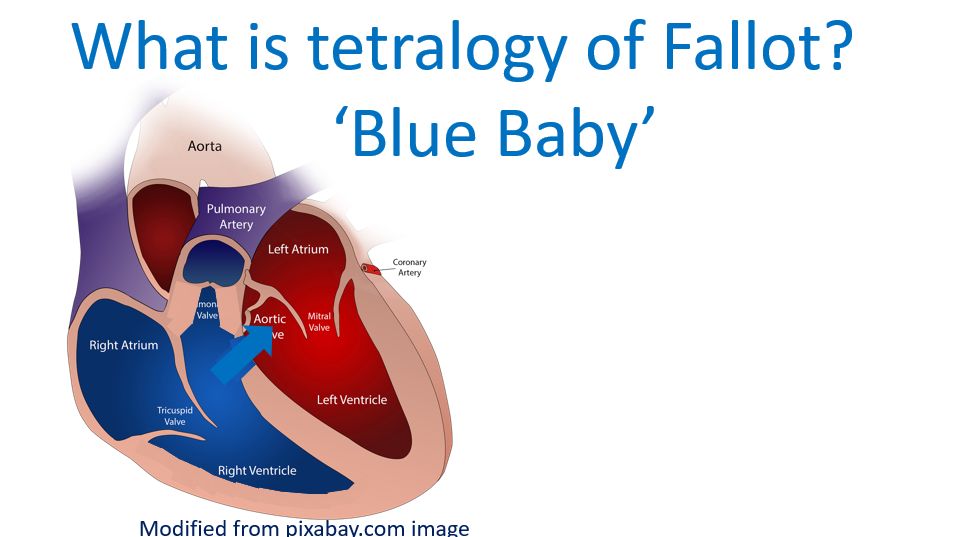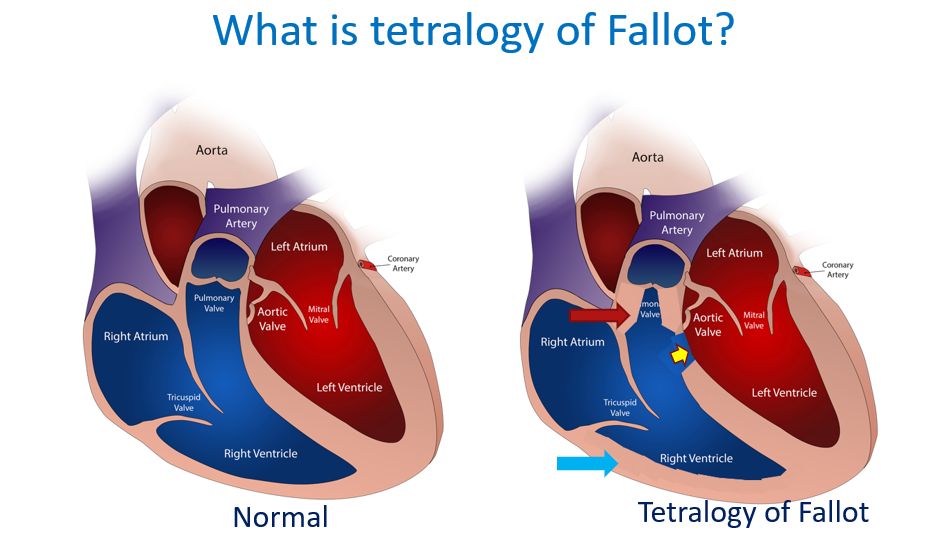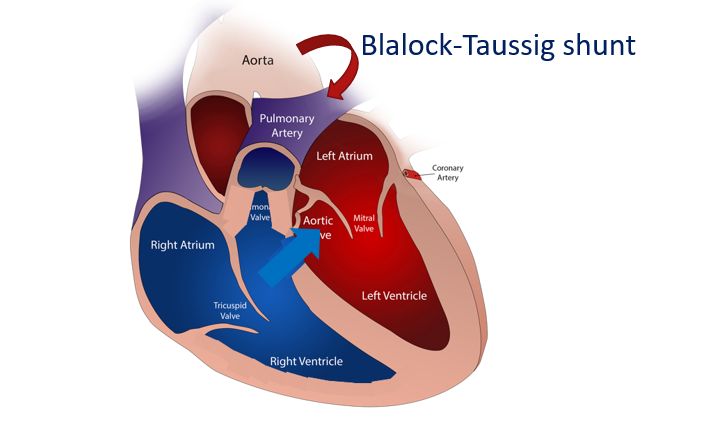What is tetralogy of Fallot? (Blue Baby)
What is tetralogy of Fallot? (Blue Baby)

What is tetralogy of Fallot? Tetralogy of Fallot is a congenital heart disease with a combination of four birth defects of the heart. Babies with these defects are often called ‘blue babies’ due to lower oxygen content of blood.

The four defects are: a large defect in the wall between the lower chambers of the heart (ventricular septal defect), overriding of the aorta, the largest artery which supplies oxygenated blood to the whole body, pulmonary stenosis with obstruction to the blood vessel carrying deoxygenated blood to the lungs and thickening of the wall of the right lower chamber of the heart (right ventricular hypertrophy).
Blood with low oxygen content from the right ventricle gets shunted across the ventricular septal defect into the right ventricle. This causes a drop in the oxygen level of the blood pumped to the body and bluish discoloration of tongue, lips and skin. So, babies born with tetralogy of Fallot are seen as blue babies.
As there is obstruction in the flow of blood to the lungs, less amount of blood reaches the lungs for oxygenation. This also contributes to the blue color of the person. In babies there can be sudden worsening of bluish colour after crying known as cyanotic spells.

Cyanotic spells can be treated with medications. If there is no response a surgical shunt can be created between a branch of the aorta and pulmonary artery to improve the blood flow to the lungs, called as modified Blalock-Taussig shunt.

Definitive treatment of tetralogy of Fallot is intracardiac repair by open heart surgery. During intracardiac repair, obstruction to blood flow to the lungs is surgically removed and the ventricular septal defect is closed using a patch.
So, the right to left shunt is abolished and the bluish discoloration of lips, skin and tongue disappears. Thickening of the wall of the right ventricle takes time to regress.
Though some of the long term risks like potential for abnormal heart rhythms persist, overall, the result is good, and they can live near normal lives after repair. Long term follow-up is of course needed, to look for long term sequelae.



